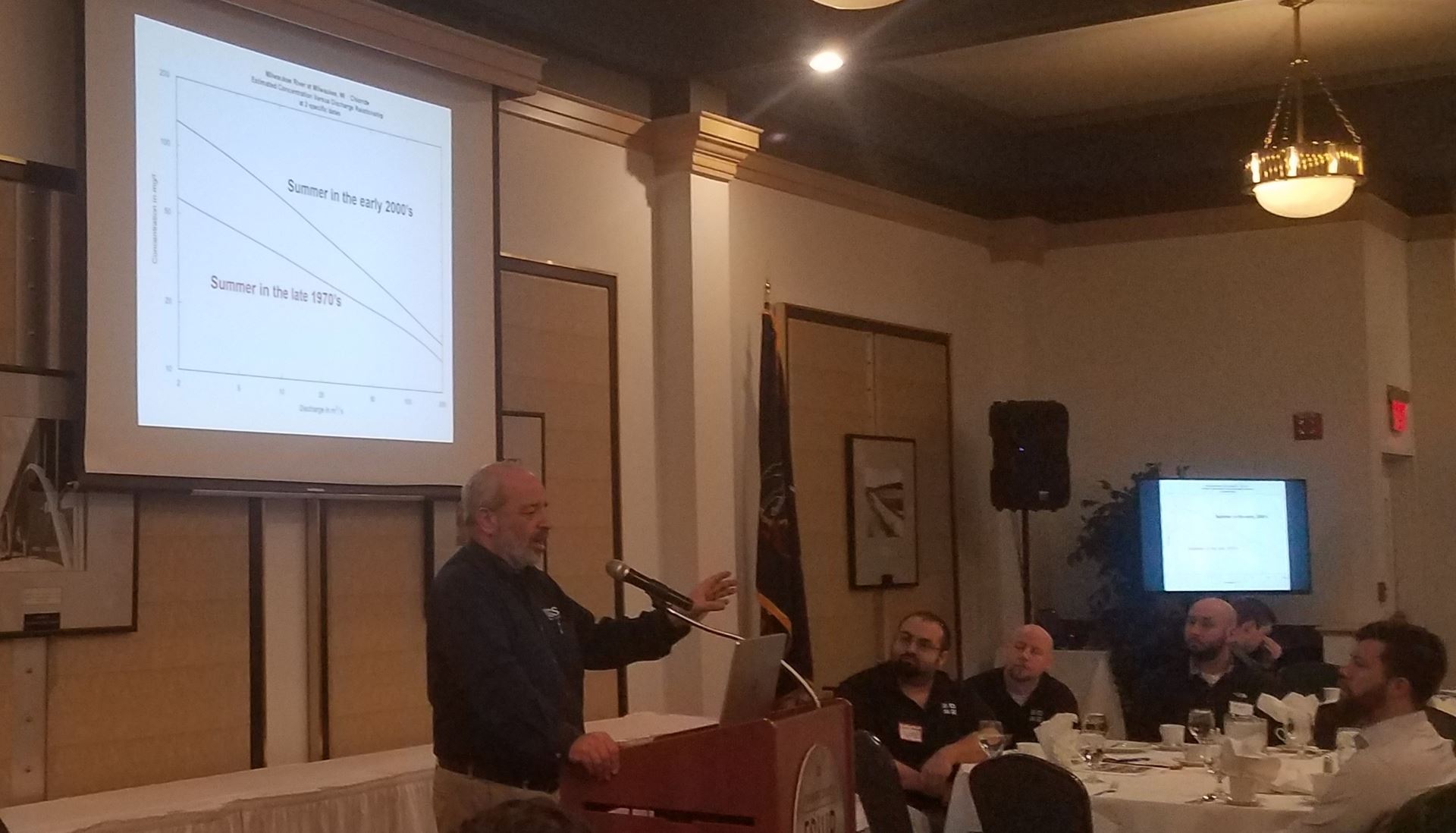By Christina Urbanczyk
 On February 26, 2018, the Environmental Water Resource Institute (EWRI) Chapter of ASCE-Pittsburgh hosted a morning seminar on the Impacts of Chlorides on Urban Land and Waterways. The event was hosted at the Engineers Western Society of Pennsylvania in downtown Pittsburgh, PA in partnership with 3 Rivers Wet Weather, Three Rivers Quest, 3 Rivers Proud, Allegheny County Conservation District, American Public Works Association, Allegheny Watershed Alliance, Jacobs Creek Watershed Association, Nine Mile Run Watershed Association, Pittsburgh Water and Sewer Authority, Saw Mill Run Watershed Association, Southwestern Pennsylvania Commission Water Resource Center, and Westmoreland Conservation District.
On February 26, 2018, the Environmental Water Resource Institute (EWRI) Chapter of ASCE-Pittsburgh hosted a morning seminar on the Impacts of Chlorides on Urban Land and Waterways. The event was hosted at the Engineers Western Society of Pennsylvania in downtown Pittsburgh, PA in partnership with 3 Rivers Wet Weather, Three Rivers Quest, 3 Rivers Proud, Allegheny County Conservation District, American Public Works Association, Allegheny Watershed Alliance, Jacobs Creek Watershed Association, Nine Mile Run Watershed Association, Pittsburgh Water and Sewer Authority, Saw Mill Run Watershed Association, Southwestern Pennsylvania Commission Water Resource Center, and Westmoreland Conservation District.
The morning seminar was a series of presentations discussing the impacts of the elevated use of roadway salts in cold weather climate watersheds on surrounding land and waterways, and included perspectives on local, regional and national levels. Presentations and follow-up discussions focused on quantifying salt loading and impacts overtime as well as how to reduce loading by improving winter BMP maintenance.
 The seminar began with a presentation by Robert Hirsh, a research hydrologist with the US Geological Survey, Washington DC Office. Hirsh’s data from the past few decades indicates that an increase in chloride concentration in streams has outpaced urban growth. His data also demonstrates an increase in chloride concentration in groundwater and lakes. Hirsh further emphasized the need for continuous stream flow data to monitor chloride loading in conjunction with chloride concentration.
The seminar began with a presentation by Robert Hirsh, a research hydrologist with the US Geological Survey, Washington DC Office. Hirsh’s data from the past few decades indicates that an increase in chloride concentration in streams has outpaced urban growth. His data also demonstrates an increase in chloride concentration in groundwater and lakes. Hirsh further emphasized the need for continuous stream flow data to monitor chloride loading in conjunction with chloride concentration.
The second presentation was delivered by Brady Porter of Duquesne University and 3 Rivers QUEST. Porter provided an overview on the seasonal chloride concentrations in the Allegheny, Monongahela and Ohio Rivers. Porter’s group is involved in the periodic sampling of numerous surface water locations along these rivers, as well as continuous monitoring with YSI probes.
The impact of chloride toxicity in urbanizing watersheds was discussed on a regional level by James Houle of the University of New Hampshire. Houle discussed data collected from his research group on the performance of various best management practices (BMPs) on reducing chloride loading from salt applications. Because parking lots are a major source of chloride loading, Houle’s research primarily focused on salting of parking lots and the resulting friction resistance of various lot surfaces. Houle’s presentation indicated that salt reduction may be possible with no loss in surface skid resistance using alternative mechanical methods of application.
While a majority of the presentations focused on the impacts of chloride, Dan Bain from the University of Pittsburgh provided a different perspective by focusing on sodium impacts. Bain’s presentation highlighted that roadway salt applications cause legacy contamination, because both sodium and chloride alter metal mobility in soils. This discussion on the alteration of soil and water chemistry due to salt provided insight into the long-term effects of the roadway salt applications on the environment.
The presentations at the seminar introduced a wide range of data and recommendations for further research from the local, regional and national level on the impacts of roadway salts. Erin Kepple Adams from the Southwestern PA Commission concluded the seminar with a discussion on the importance of improving winter BMP management with training and workshops, which may decrease salt use for deicing of roadways. Adams also provided seminar attendees with a useful resource guide on winter maintenance BMPs.
Thanks again to our sponsors of this event, without which this seminar could not have been possible.

